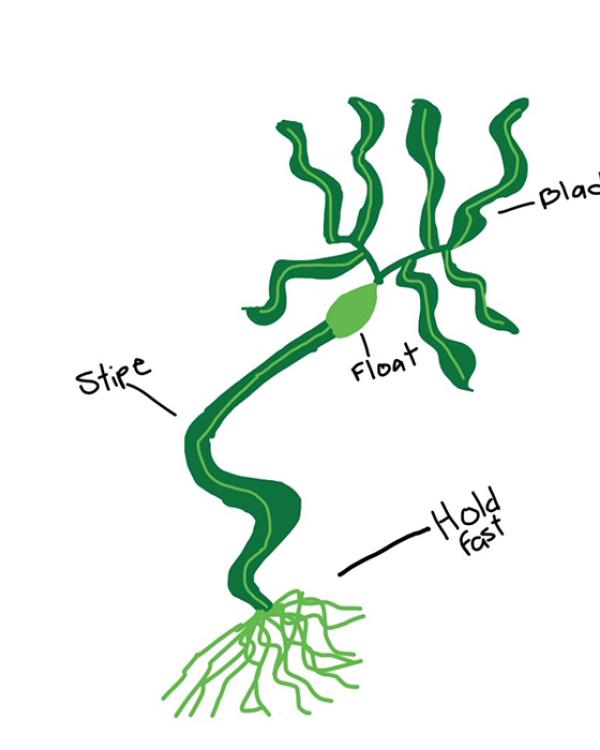
Kelp washes up on our gritty beach shore, while the waves splash against the bluffside rocks . . . . At the bottom is a structure like a root called a ‘holdfast.’ Kelp attaches to heavy objects, like a rock, with their holdfast . . . . The kelp washes up to shore because the holdfast breaks off the ground and the strong, big water currents in the deep, blue sea take the kelp to shore.
[excerpt and drawing from Daniela Espinoza Aguilar, a fifth grade author in the forthcoming publication, The Hawk and the Sea: An Anthology of Our Maritime Community]
I have learned so much in such a short period of time, and the bulk of what I have learned came from those much younger than I. It is usually around this time of the academic year that I begin gathering information from my Community Based Literacies (CBL) program coordinators, assessment specialists, undergraduate facilitators and faculty colleagues about how participants in our youth-based programs have grown and what we have accomplished as a multiprogram team. Social justice atrocities and turmoil currently abound in media outlets, making painfully visible what has always been the case--we live under different social codes that privilege some over others with life and death consequences. We are living through a tumultuous reckoning that is long overdue.
The torrential storm of racialized hatred and grief is a parallel manifestation of the increased intensity and number of storms that disproportionately affect living species, like kelp, in our ocean. Unchecked consumption of fossil fuels and lack of corporate oversight has led to an increase in average global temperatures and colossal storms that rip living kelp, corals, and other forms of sea life from their habitats, leaving a barren ocean floor. Similarly, greed, racism, and ignorance have plagued our societies since the very beginning, and now given the current pandemic and the affordances of social media technologies, the cavernous rifts among social groups can no longer be overlooked.
Even as these torrential storms wreak havoc on us, I see growth. I see how children, like the fifth grader quoted above, are teaching us about the natural world. I see new ways of connecting and learning from my undergraduate students who collaboratively developed podcasts, activities, and curated resources for our local communities. I see my graduate student coordinators and faculty colleagues continue to connect and teach by every way possible. I see us all holding fast to the ground as the storms swirl around us . . . and every outreached hand to another strengthens our holdfast.
Diana J. Arya is Assistant Professor in Education and Faculty Director of the McEnroe Reading and Language Arts Clinic. She studies the development of community-based, interdisciplinary literacy practices of learning and innovation from preadolescence through adulthood.